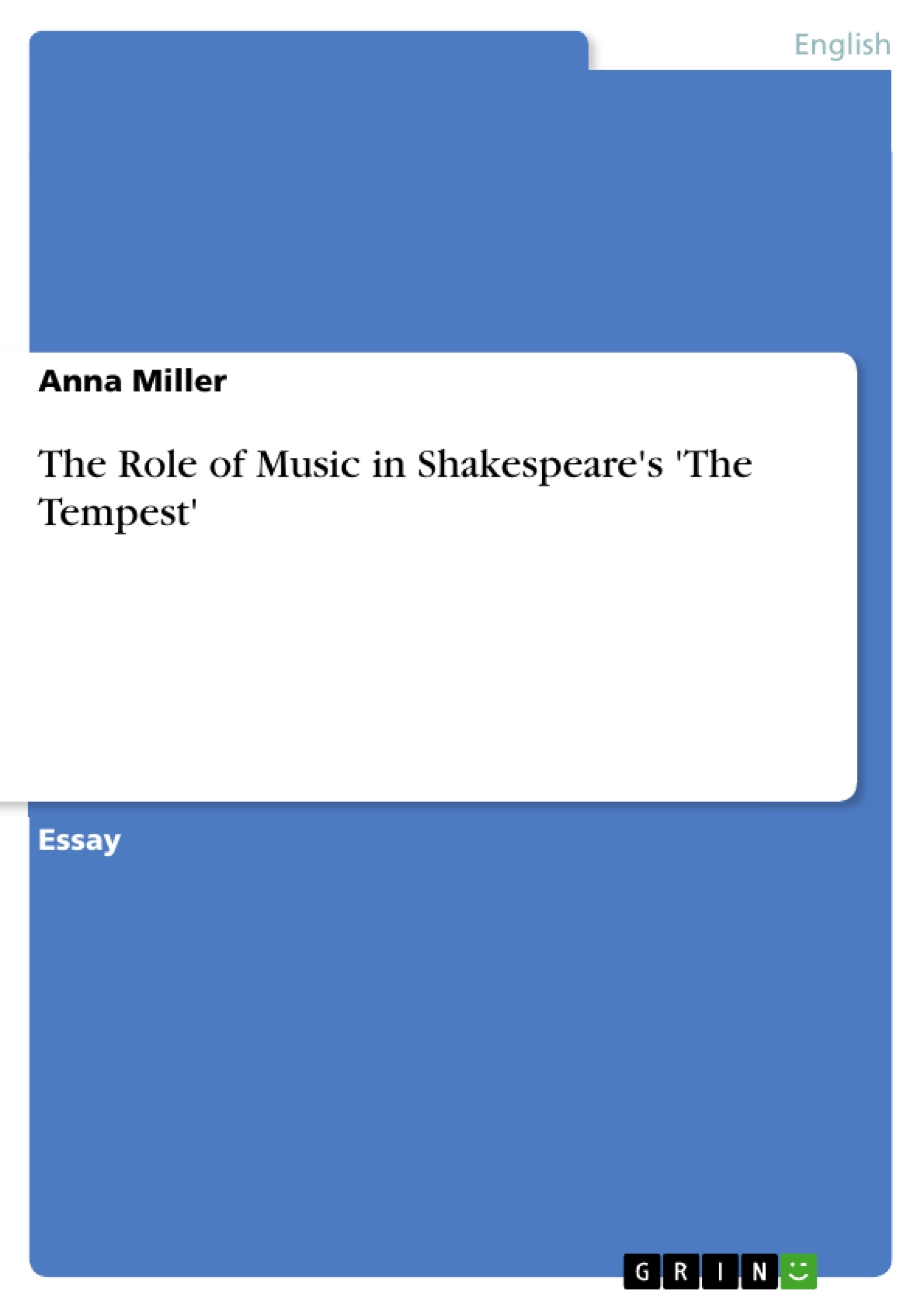Content
I. Introduction...........................................1
II. Analysis and Interpretation...................1
1. Music as Message..............................1
2. Music as Essential Part of the Play....4
3. Music as Power-Tool.........................5
III. Conclusion............................................7
IV. Bibliography.........................................8
I. Introduction
The Tempest is full of music, singing, and dancing. Every act and every scene has at least
one musical element. This is not very surprising, as Shakespeare had his own musicians, whom he
did not have to pay, and thus he could afford such a variety of music. The whole play takes place on
a desert island which is inhabited by only three people. Particularly, the “unusual soundscape [shall]
underpin[s] the strangeness of the island” (Shakespeare, Introduction 23-4). Hearing all the songs
accompanied by “solemn” music is not only spectacular for the audience, even Caliban, whom we
know as a rude and uneducated native of the island, is fascinated by “the isle [which] is full of
noises, / Sounds, and sweet airs, that give delight and hurt not” (3. 2. 127-128). Thus he wants to
calm his new friends Stephano and Trinculo, who had never seen and heard such things. Moreover,
Ariel casts a spell over Ferdinand with his music and he follows it, although he has just
shipwrecked and a different behaviour would be expected in the case of such a catastrophe.
We can see that music has a huge impact on both the figures in the play and the audience, as
this drama was actually written to be performed rather than to be read. Nonetheless it is not enough
to say that music is only used to create a nice background sound for the play. One can even go so far
and say that music plays the main role and the whole play only revolves around music. In order to
prove this, I will show in the following the important functions of music and musical elements.
Firstly, I would like to demonstrate the music's function as a message for both the figures and the
audience, secondly, the music's function as an essential part of the play and last but not least, the
most important function – music as a 'power-tool' for Prospero and in a sense also for Ariel.
Table of Contents
- I. Introduction
- II. Analysis and Interpretation
- 1. Music as a Message
- 2. Music as Essential Part of the Play
- 3. Music as a Power-Tool
- III. Conclusion
Objectives and Key Themes
The main objective of this analysis is to explore the significant role of music in Shakespeare's The Tempest, beyond its function as mere background sound. The analysis aims to demonstrate that music plays a central role in the play, shaping actions, influencing characters, and conveying thematic messages.
- The multifaceted functions of music in shaping character development, plot, and thematic meaning.
- The use of music to convey both divine order and potential for disorder.
- The impact of music on the play's audience and its role in enhancing the theatrical experience.
- The power dynamics associated with the control and use of music by characters like Prospero and Ariel.
- The contrasting perspectives and reactions to music among different characters, highlighting their moral and intellectual qualities.
Chapter Summaries
The Introduction establishes the pervasive presence of music within The Tempest, arguing that music is not merely decorative but rather a crucial element shaping the play's narrative and themes. The analysis begins by discussing the impact of music on characters and the audience, highlighting the power of music to influence behavior and create dramatic tension. The section also introduces the key functions of music that will be explored in subsequent chapters.
Chapter II further examines the roles of music in The Tempest. Section 1 explores how music acts as a message for both the characters and the audience. Examples from the play demonstrate how Ariel uses his songs to convey specific messages, manipulating the perceptions and actions of others. Section 2 highlights the importance of music in the play's structure and symbolism. The chapter analyzes how music serves as an essential element in the play's overall design, enhancing its dramatic impact and thematic depth.
Keywords
The Tempest, Shakespeare, music, Ariel, Prospero, symbolism, power, drama, character development, audience engagement, theatrical experience.
- Quote paper
- Anna Miller (Author), 2011, The Role of Music in Shakespeare's 'The Tempest' , Munich, GRIN Verlag, https://www.grin.com/document/197062




